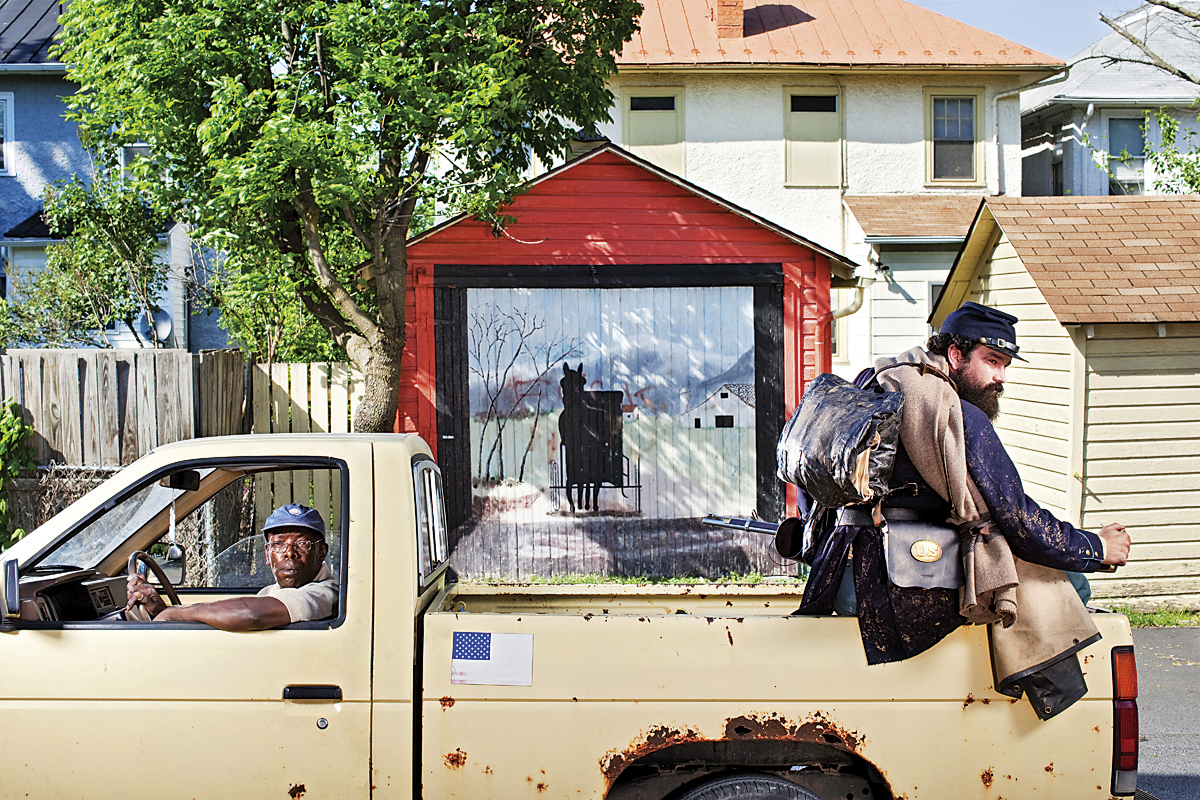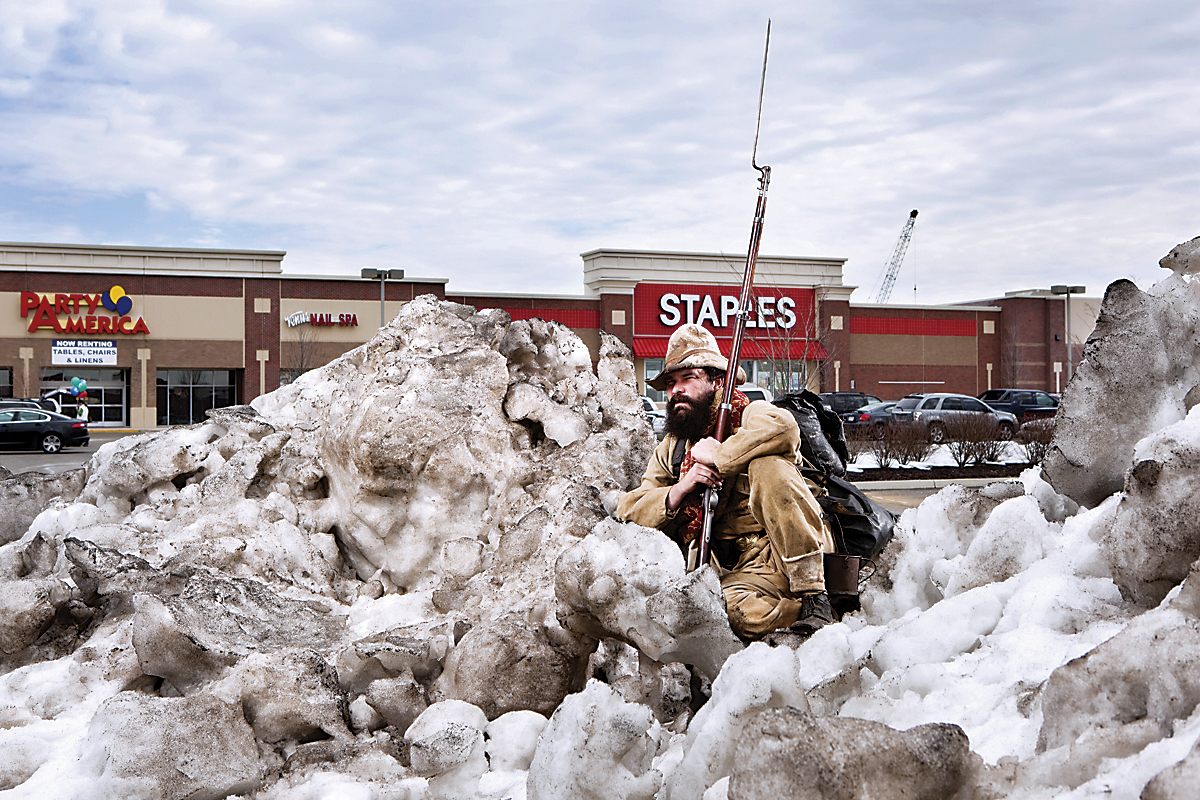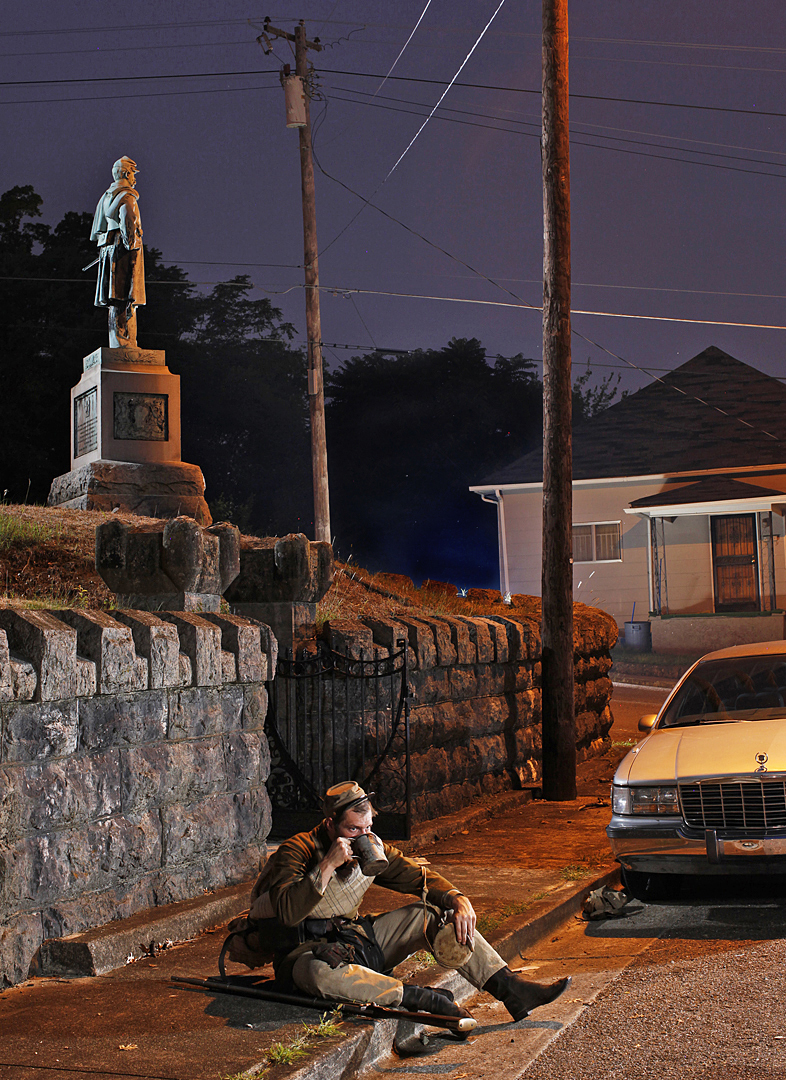'State of the Union': Photo exhibit shows clash of Civil War history, sprawl
Friday, January 1, 1904
ARTSBRIEFS* University Art Gallery, Georgia Avenue (Sewanee: University of the South), Sewanee, Tenn.; "Richard Fleming: Walking to Guantanamo," exhibition of photographs and stories from the author's journey across Cuba closes on Tuesday. Hours: 10 a.m.-5 p.m. CST Tuesday-Friday; noon-4 p.m. Saturday-Sunday. 931-598-1223.* River Gallery, 400 E. Second St.; meet-the-artist/demonstration event with Robin Kinney, who incorporates collaged elements on painted canvas to create one-of-a-kind mixed-media pieces, 1-4 p.m. Sunday. 423-265-5033, ext. 5, www.river-gallery.com.
The toothless old woman at the edge of Chickamauga Battlefield had her way in kicking him off her property, but Gregg Segal eventually got his local shot.
At the time, the California editorial photographer was in town to capture images for his April 2011 Time magazine-commissioned photo essay, "Why They Fight: Civil War Re-enactors and the Battle over Historic Sites."
Today, 18 of Segal's photographic images -- including one at the Orchard Knob Reservation -- are on display through Jan. 31 at Warehouse Row's North and South buildings in the touring exhibit "State of the Union."
Most of the images capture re-enactors on or near the war's battlefields as they smack up against 21st-century urban sprawl.
"It's the juxtaposition of a kind of heroism and romanticism with the kind of crass commercialism and development of our time," said Segal, 47.
The photographer said as he travels from coast to coast for magazine assignments, he finds the "dulling sameness to the landscape -- the same collection of fast-food places. You feel like [you're on] a treadmill, and you haven't gone anywhere."
The photos were made with local re-enactors over five 2010 trips to Virginia, Pennsylvania, Georgia, Kentucky and Tennessee.
Segal said the images were not made during re-enactments but were arranged with proper lighting to add drama and augment the scene.
"You want it to feel almost like a single-frame movie," he said, "to feel the drama, a sense of the moment, to feel like you're walking through the frame, inhabiting it."
The local photo shows re-enactor Steve Evans taking a drink as he sits outside the stone boundary of the Orchard Knob Reservation, the site of a brief November 1863 skirmish between Union and Confederate soldiers before the Battle of Missionary Ridge.
Over his left shoulder is a monument to the 46th Pennsylvania Infantry, while a 2000s model cream-over-tan Cadillac sits on the street to his left. A small 20th-century home is in the background.
"We spent the whole day driving around [Chattanooga and the Chickamauga Battlefield]," Segal said. "It was a frustrating day. We found a place that was compelling, but the land owner came out and threw us off her land."
Among other photos in the exhibition are a group of five Confederate re-enactors peering over a fence in Spring Hill, Tenn., a subdivision of 21-century, two-story houses rising in the background; two re-enactors on a Federal campsite in Fredericksburg, Va., the lights of a Honda dealership and its shiny new vehicles in the background; three re-enactors marching through the Gettysburg Cemetery, a Comfort Suites hotel uncomfortably close on their right flank; and a Federal re-enactor on the Nashville battlefield, an interstate triple overpass just behind him.
"The re-enactors are inhabiting [the scenes] almost like the ghosts of the soldiers," Segal said. "It's the simultaneity of the past layered over the culture."
The photographer worked on the project with Civil War expert and re-enactor Robert Lee Hodge, whose photo graces the cover of a book, "Confederates in the Attic," he'd just read.
"He was justifiably leery [of being stereotyped]," Segal said of the Virginian. "It took a while to get his confidence."
But things gelled, he said, when Hodge, a battlefield preservationist, realized they were "working with the same goal in mind."
The white-framed photos in the exhibition, half 17 inches by 22 inches and half 30 inches by 40 inches, were taken with a Canon 5D Mark II.
Kelly Scott, leasing manager at Warehouse Row, said the business and retail center is an appropriate place for the exhibition because its buildings are more than 100 years old but still play a role in the city today.
"The walls of our beautifully restored historic buildings, which stand on the land where Union forces constructed a stone fort during the war," she said in a news release, "are the perfect backdrop for a thought-provoking exhibit about the Civil War and modern culture."
The exhibit is available for viewing during Warehouse Row's normal business hours, 10 a.m. to 5 p.m. Monday through Saturday.


